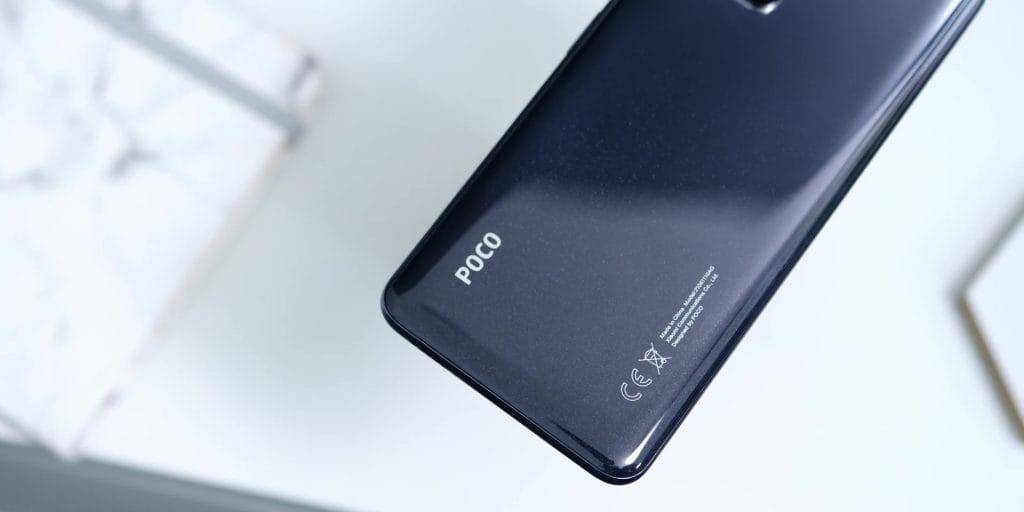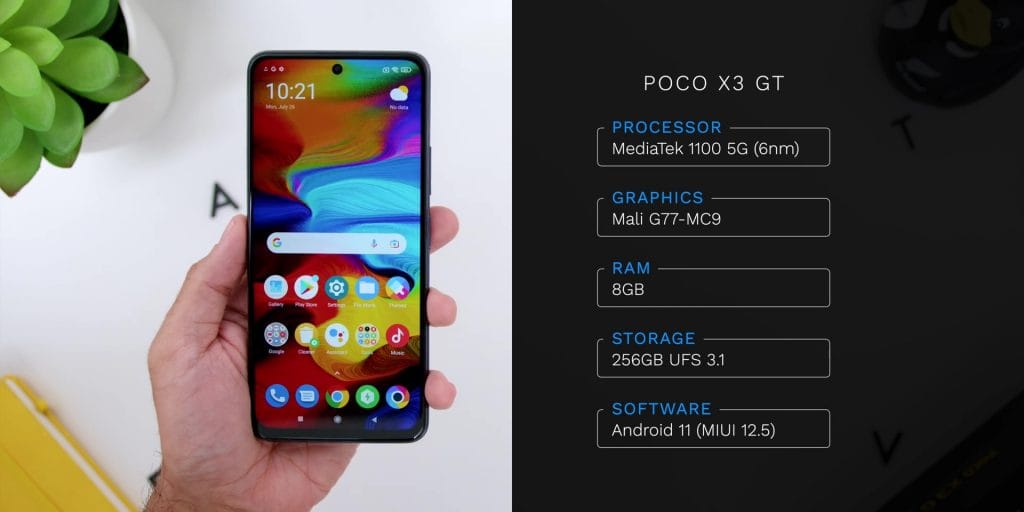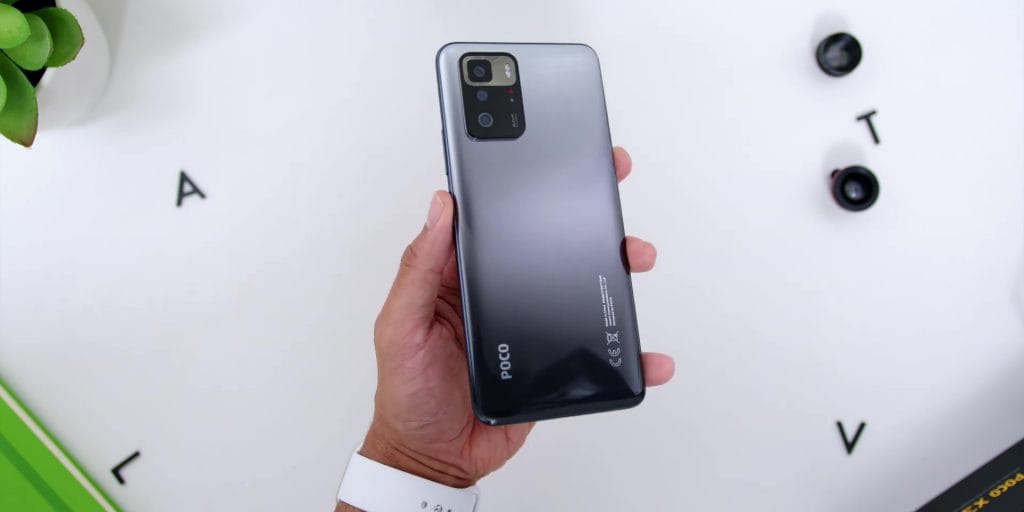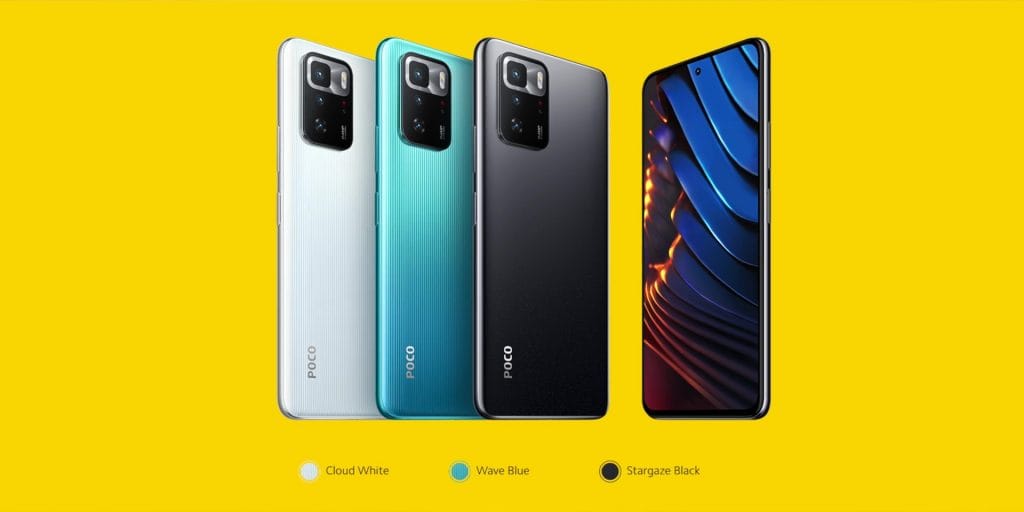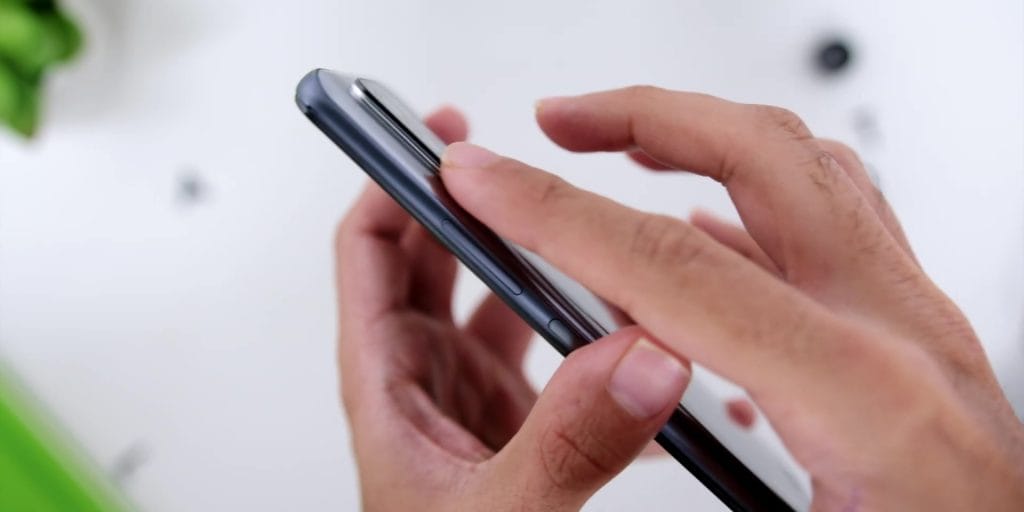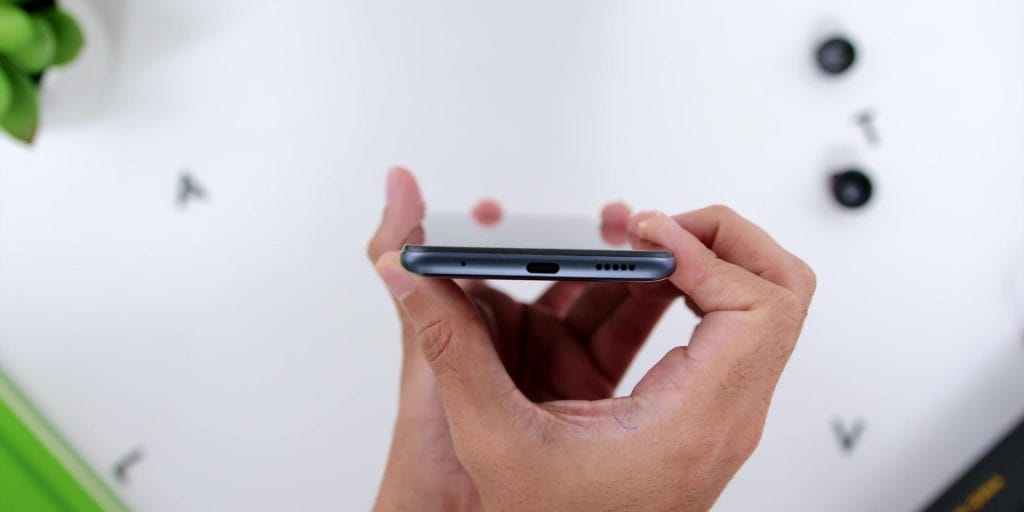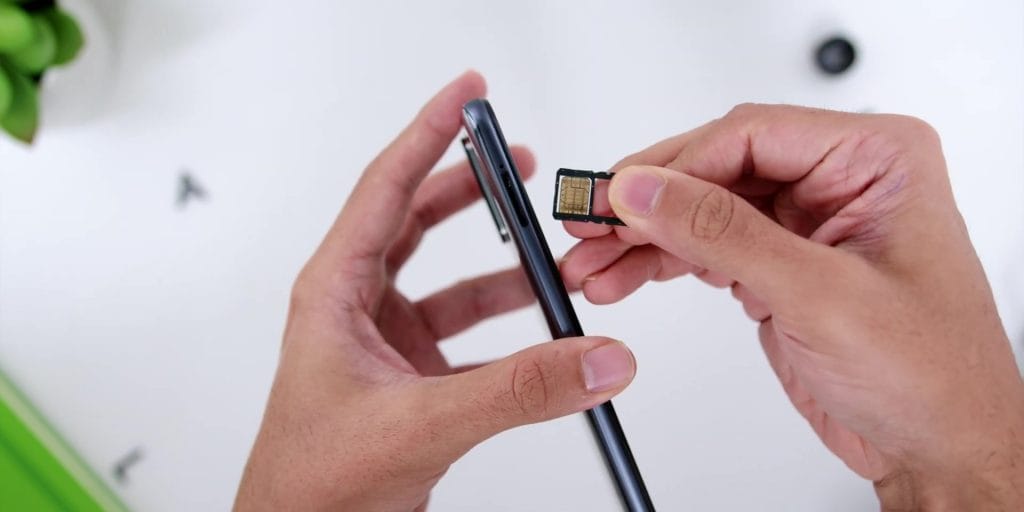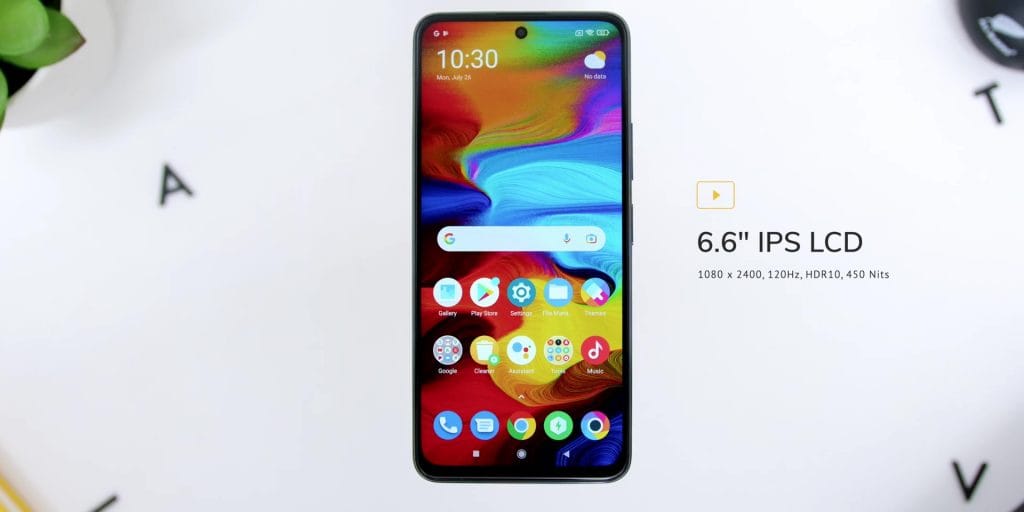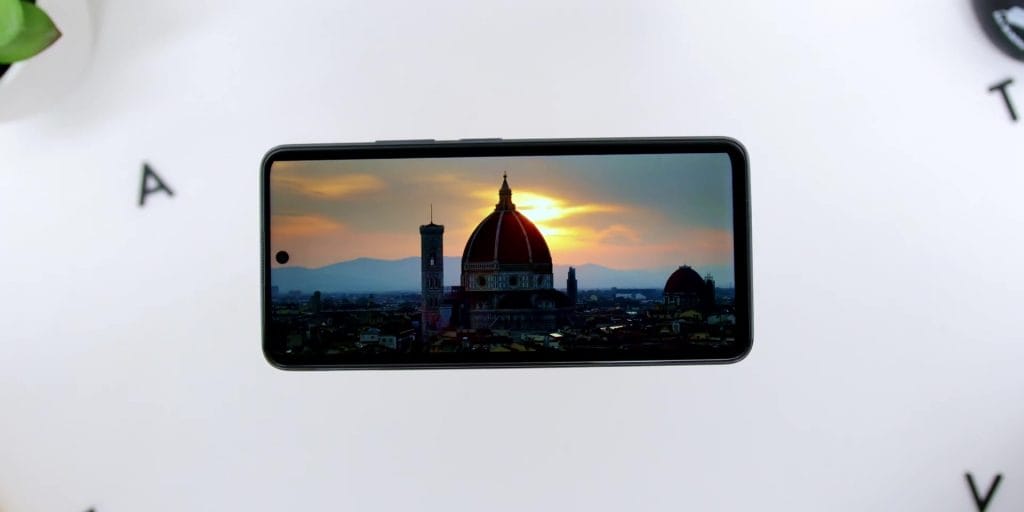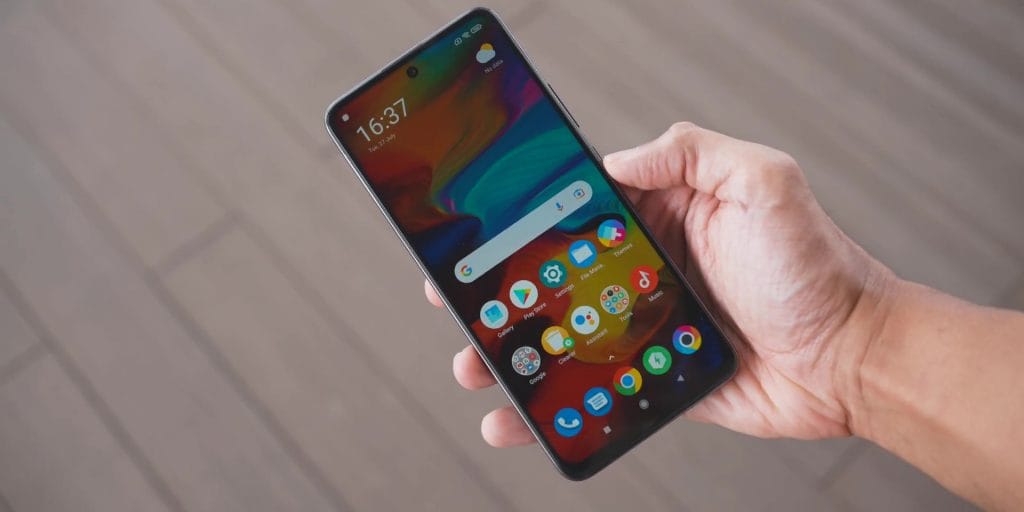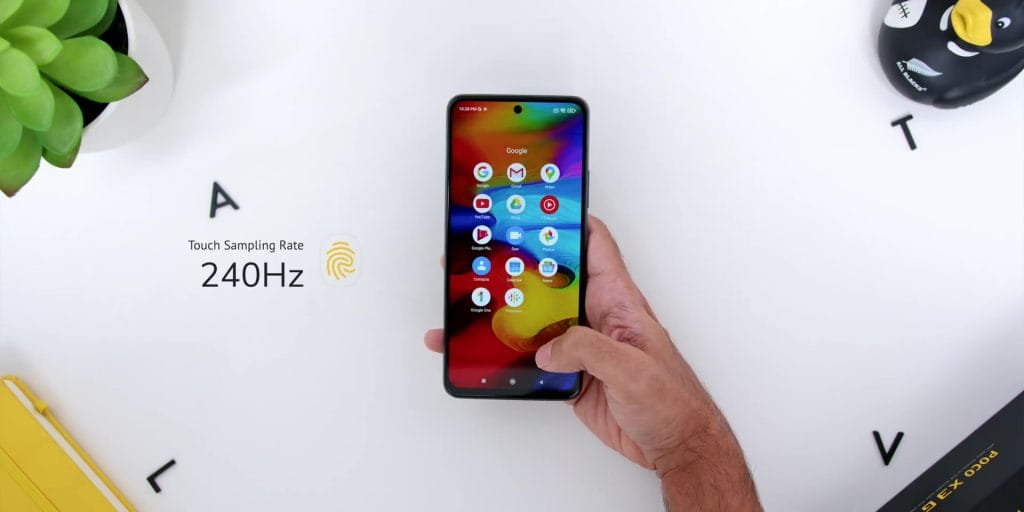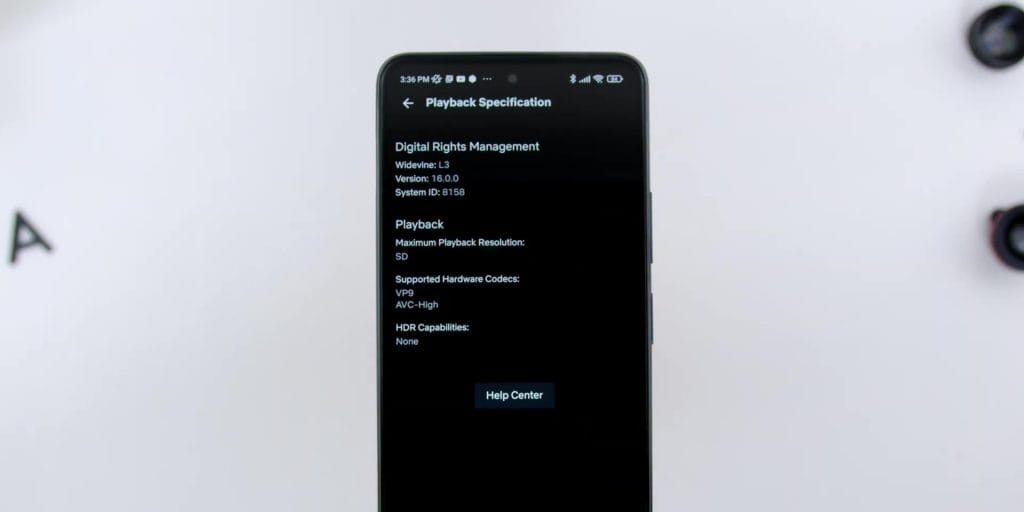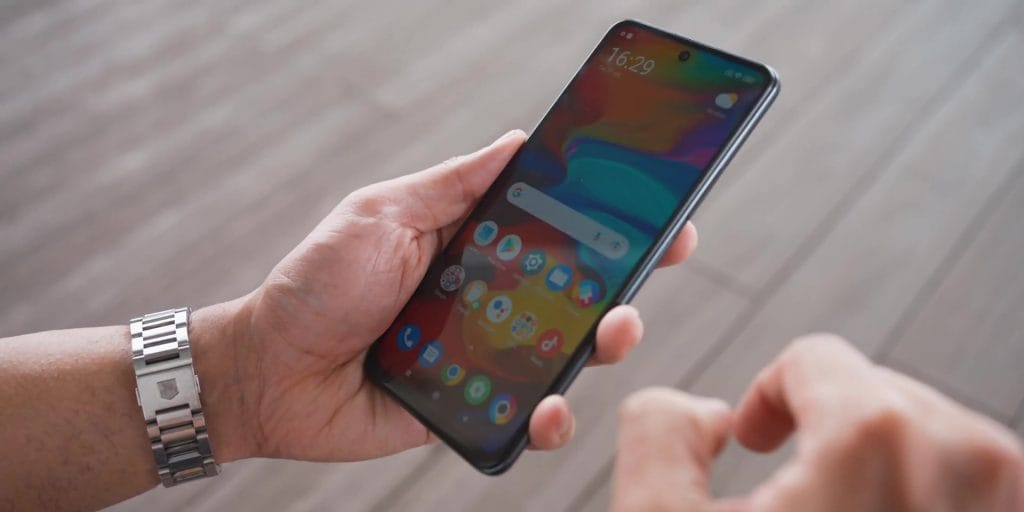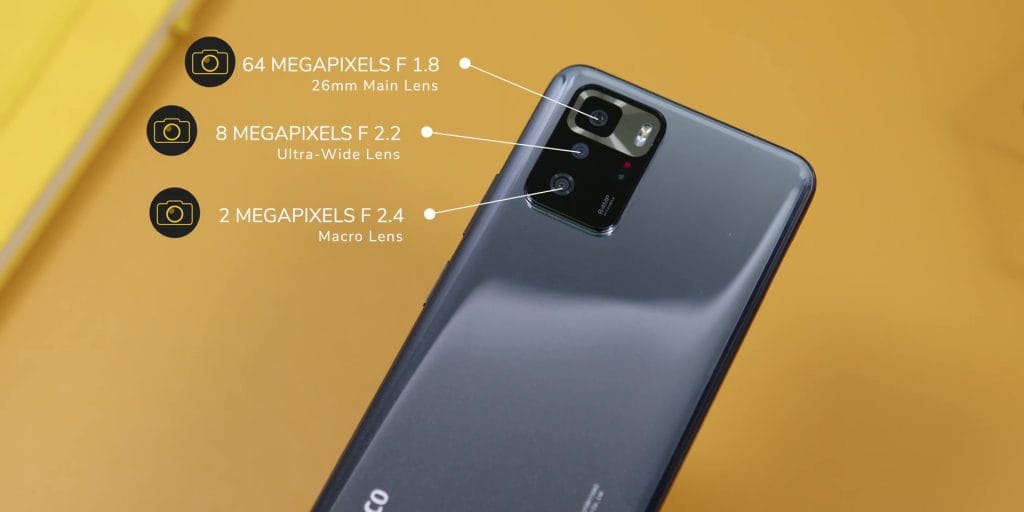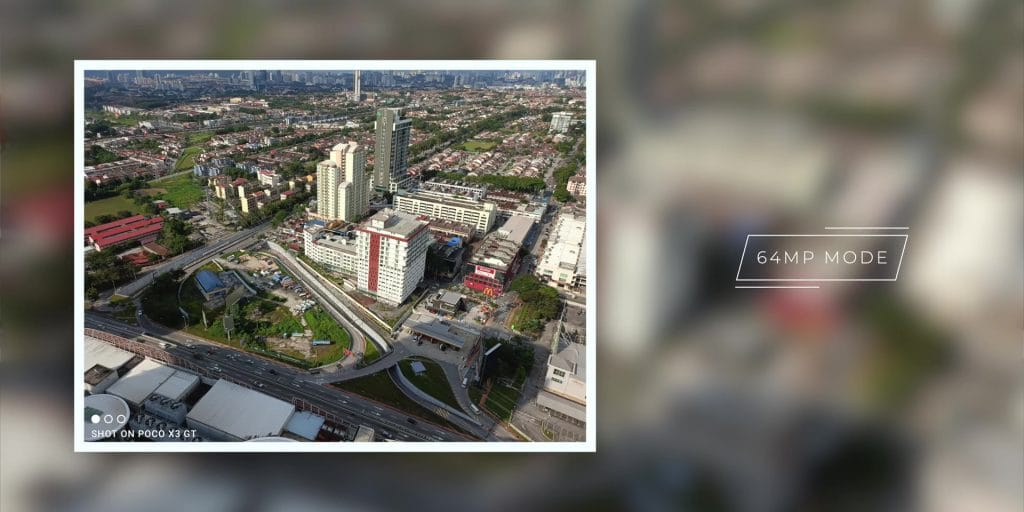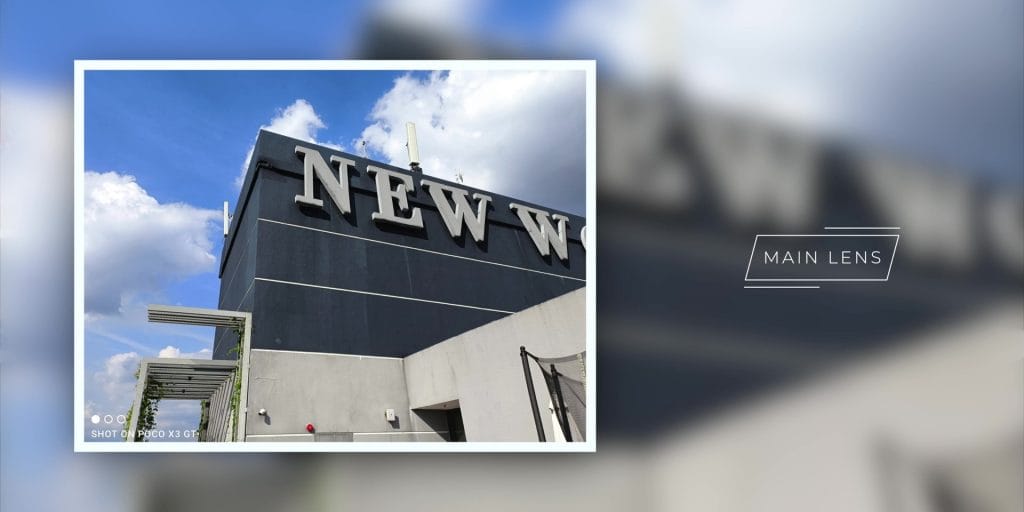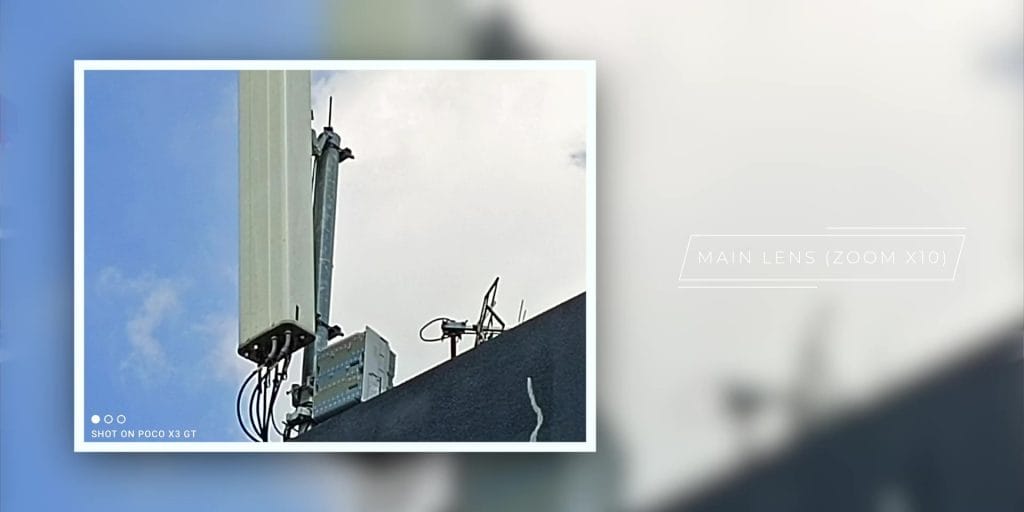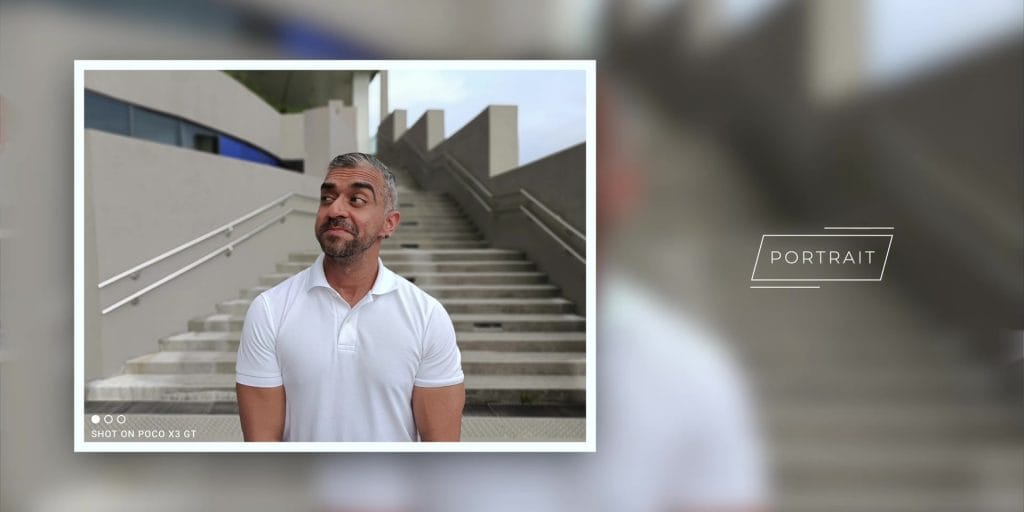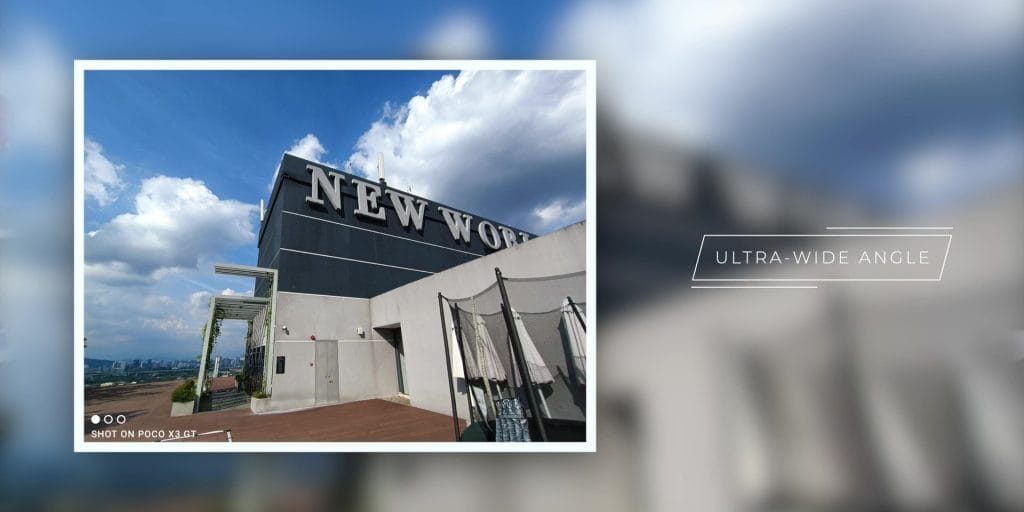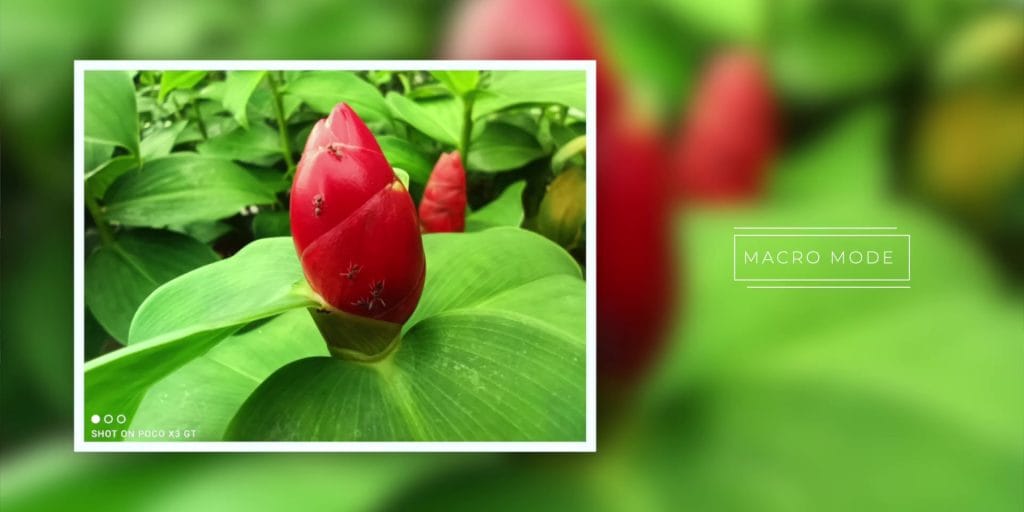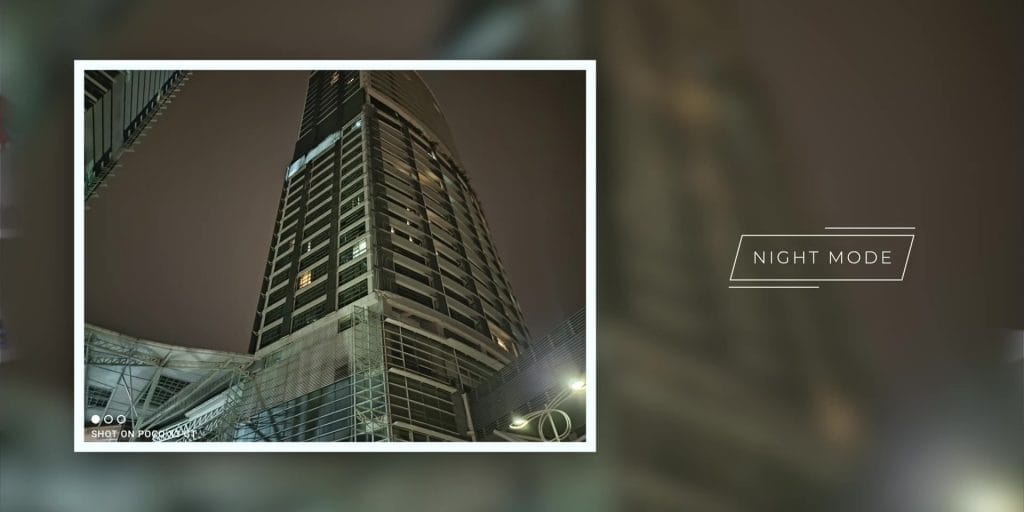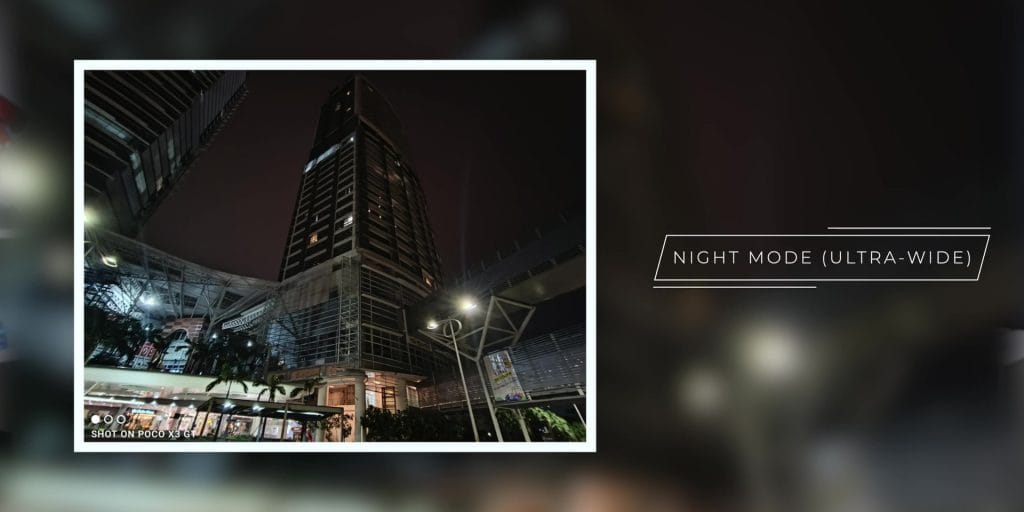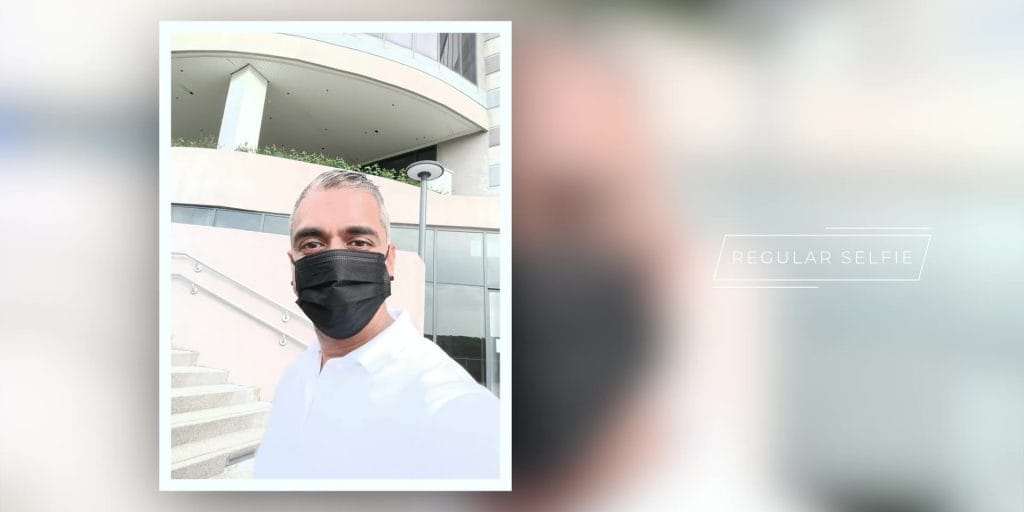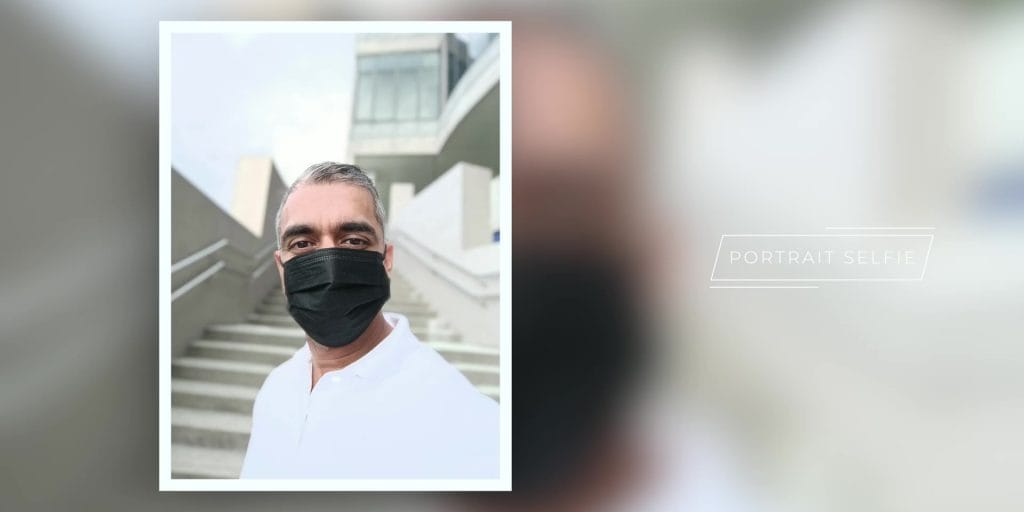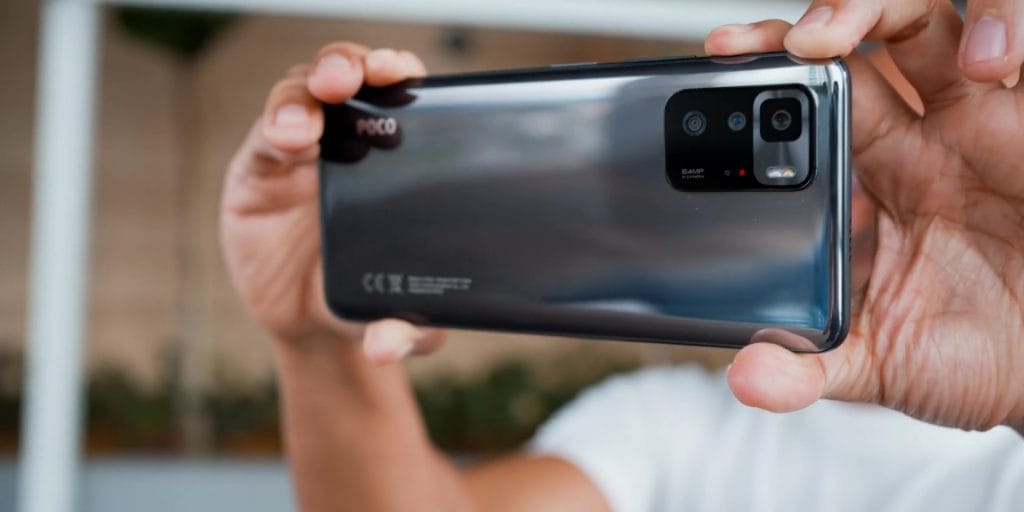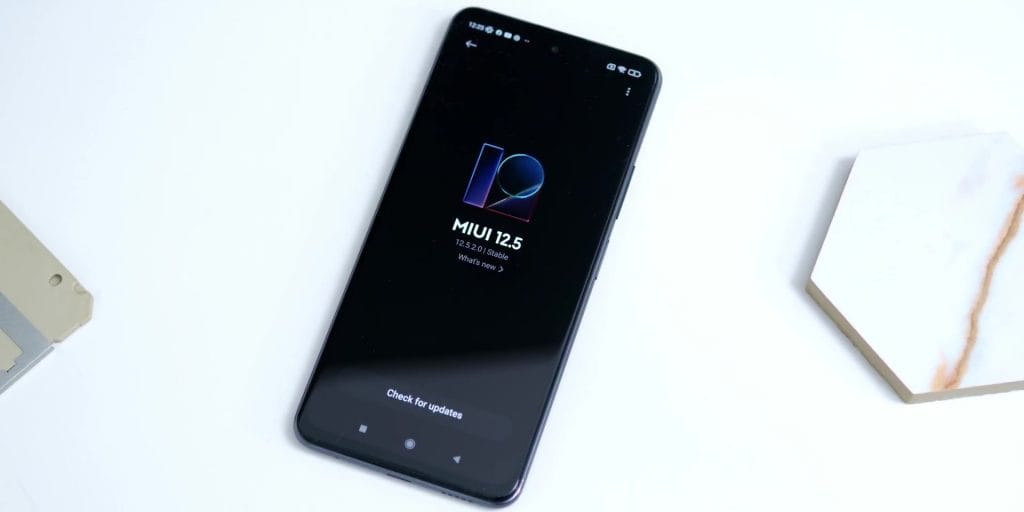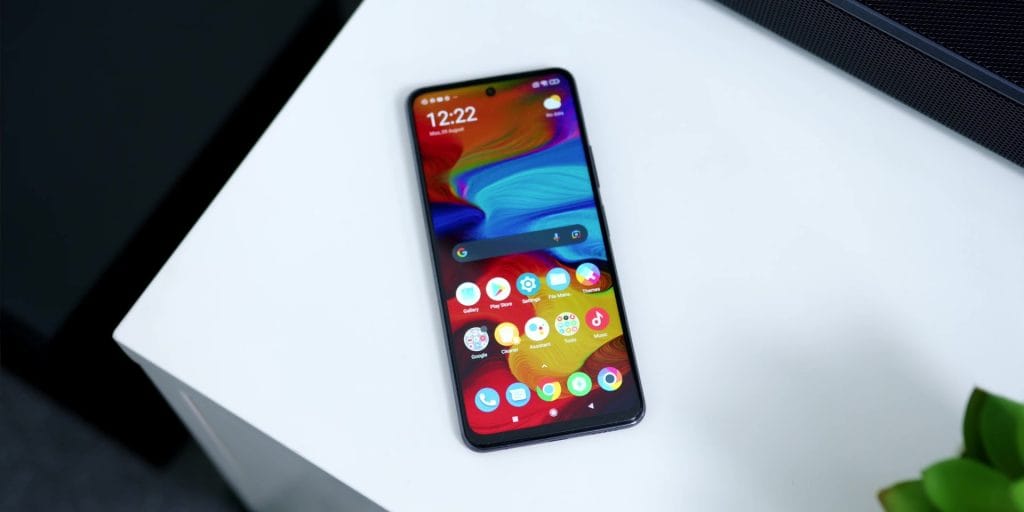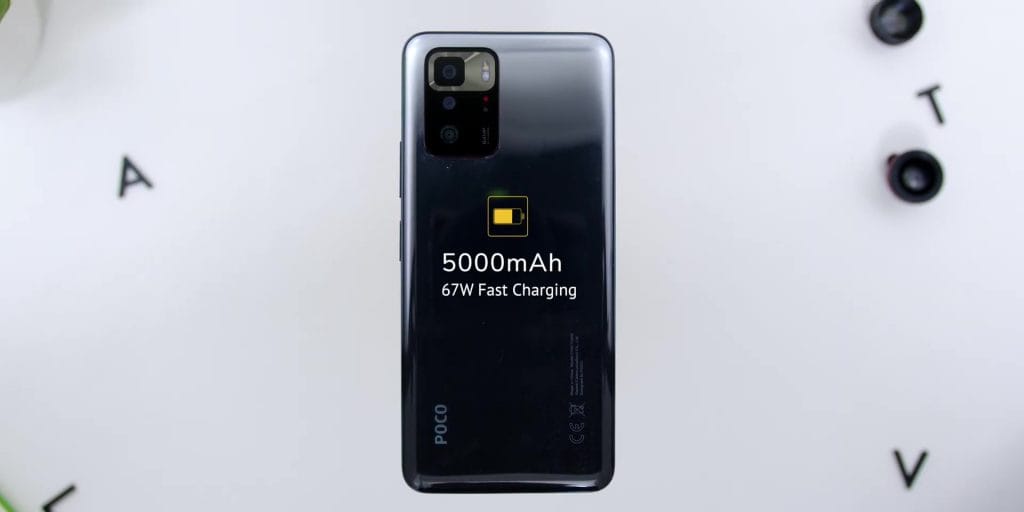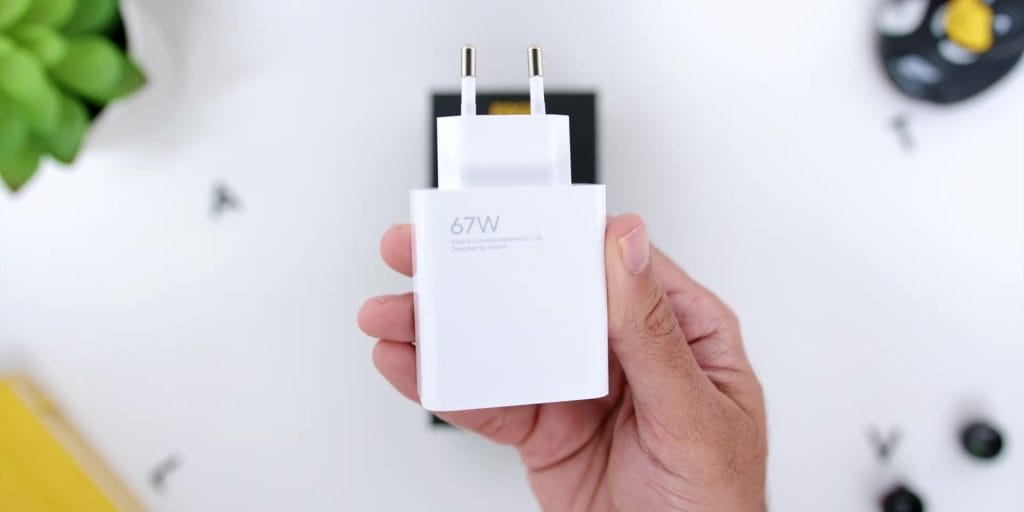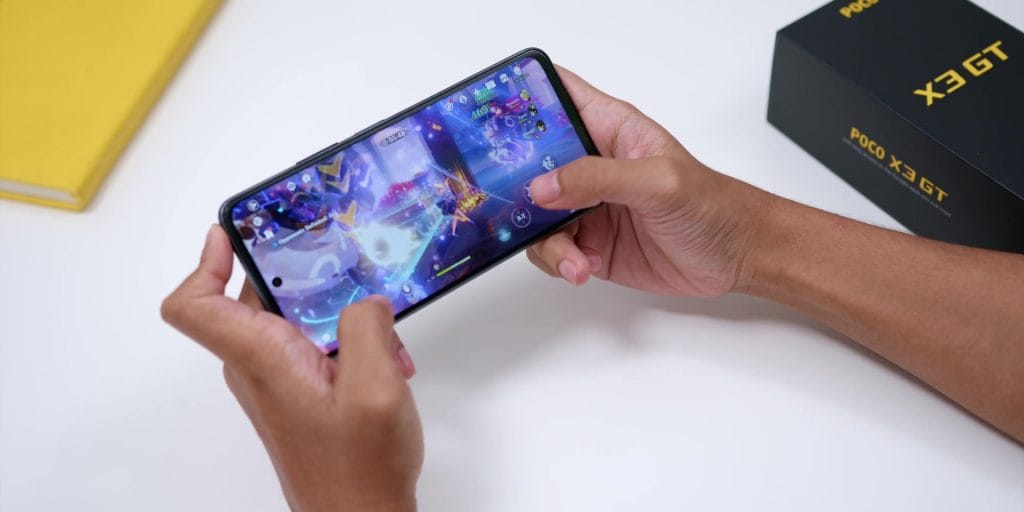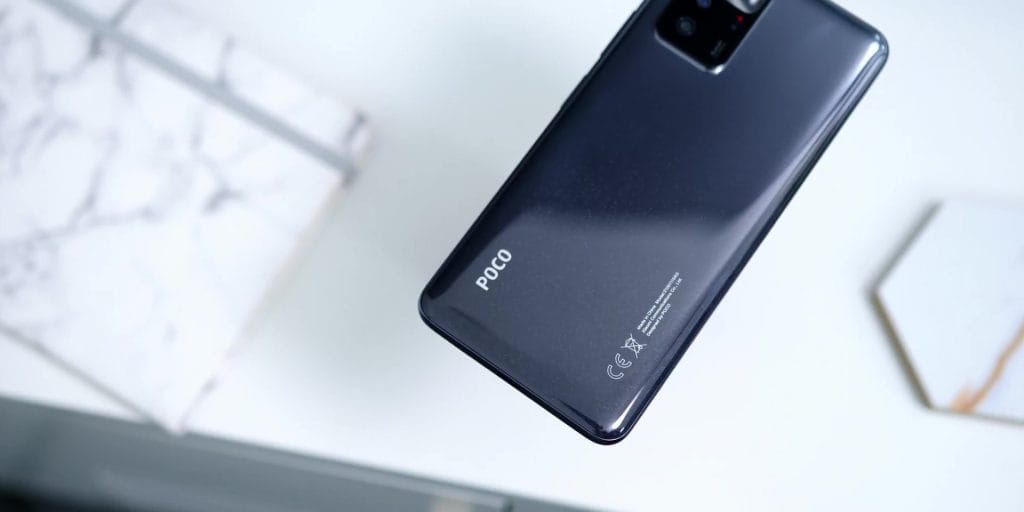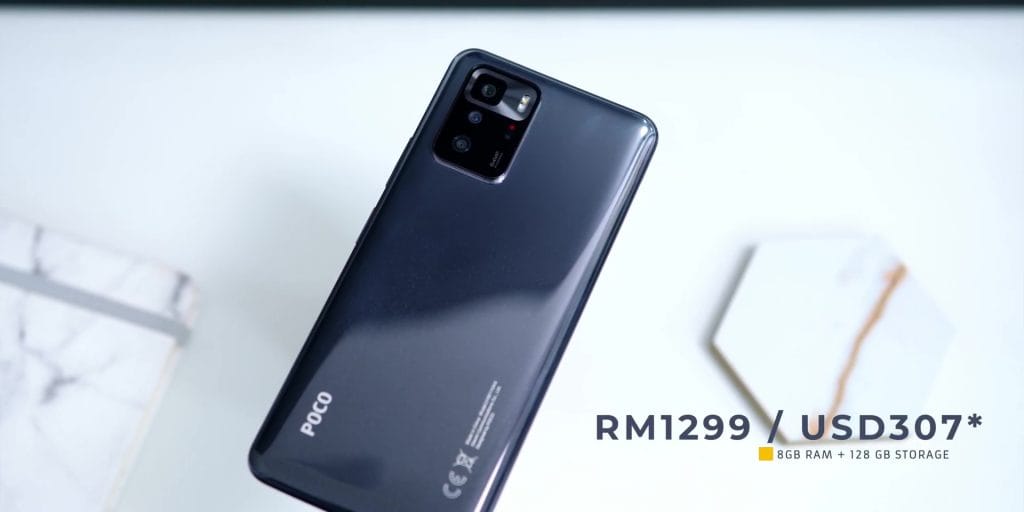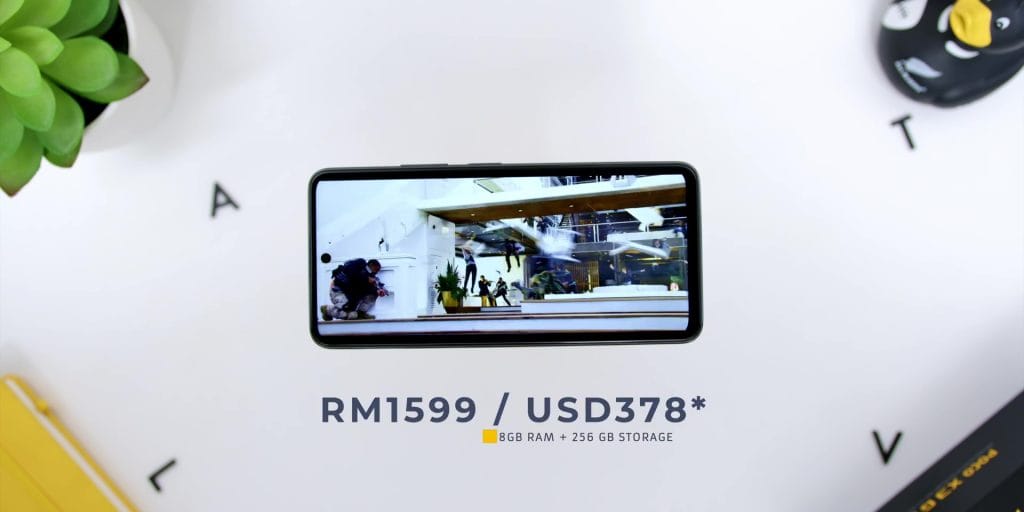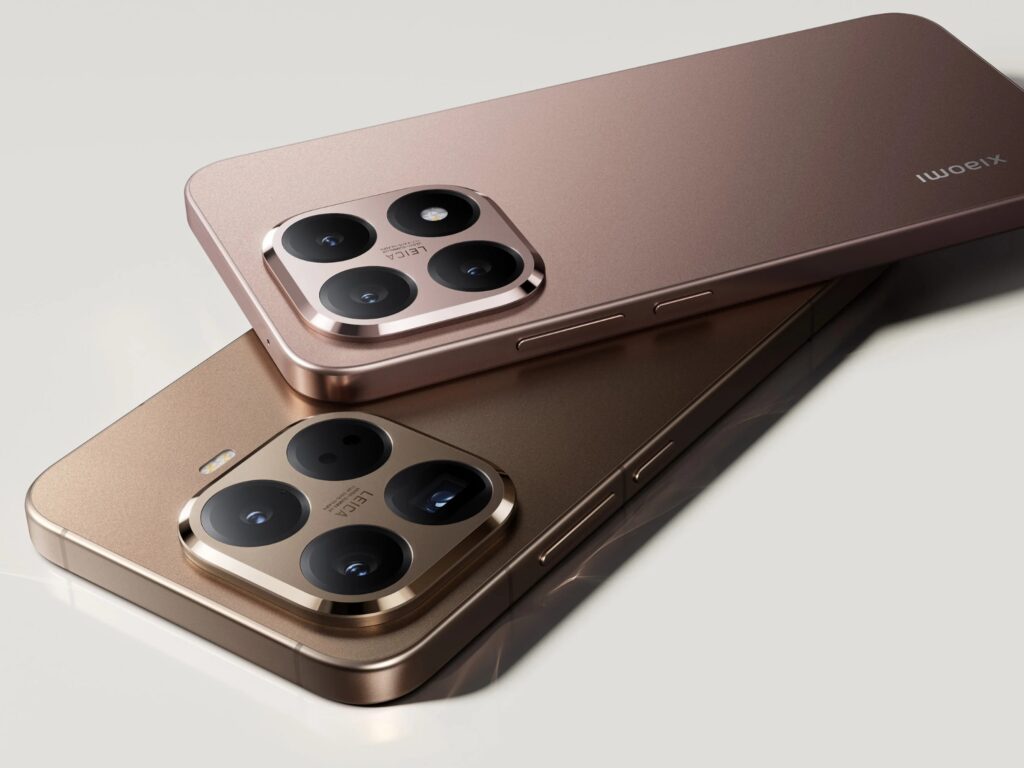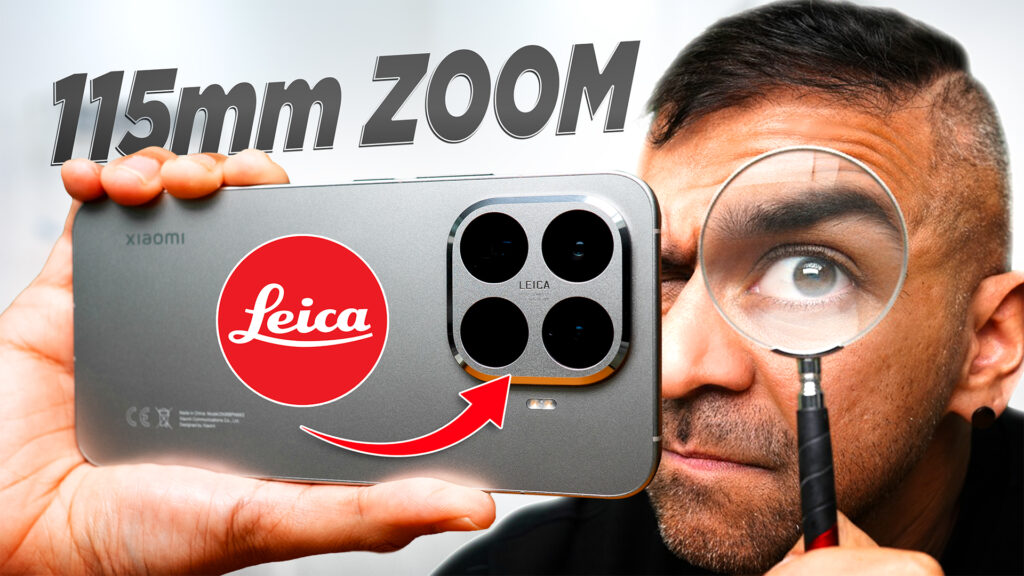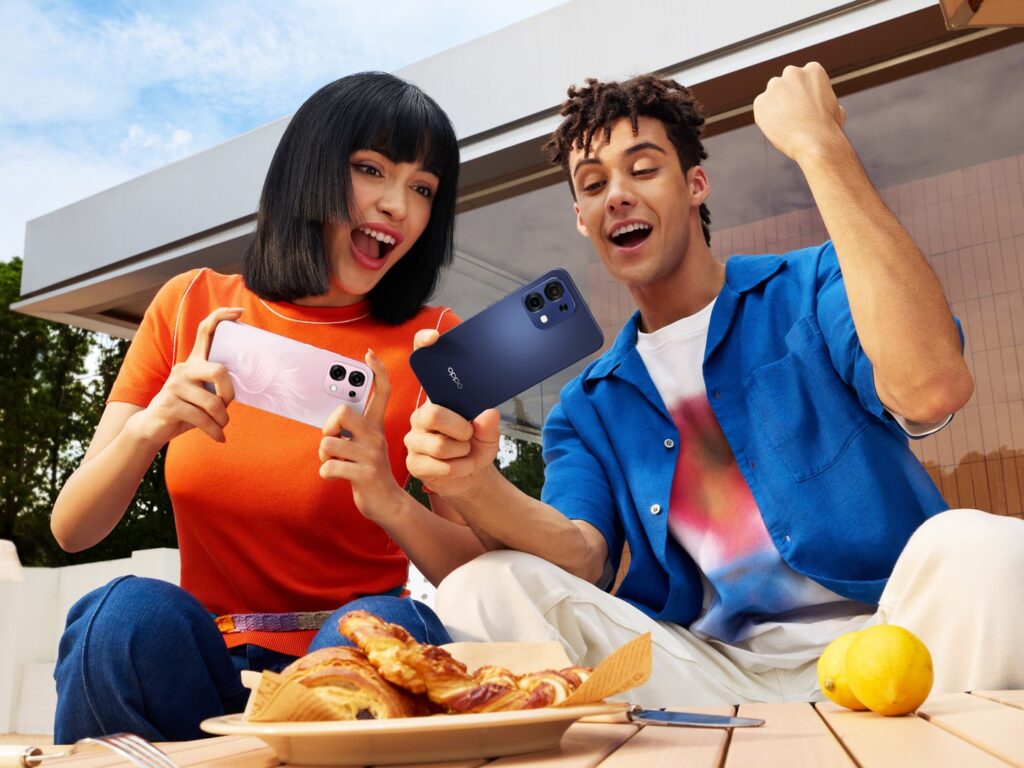In this article, I will be giving you my in-depth review of the new POCO X3 GT after using it for a week and a half, and I will answer the questions that you have asked me in my first impressions video, throughout this article and at the end as well, so don’t miss out!
Since the unboxing was done in my previous video of the phone, let’s do a recap on the specs of the phone.
Specs
The POCO X3 GT comes with the Mediatek Dimensity 1100 5G 6nm Chipset, with the Mali G77 MC9 GPU, the variant that I have is the 8 gigabytes of RAM with 256 gigabytes of storage. Backed with Android 11, it is shipped MIUI 12.5 Skin and as of the recording of this video, it is version 12.5.1 POCO Skin.
Build Quality
As for the phone’s design and build’s quality, nothing really to shoutout about honestly and nothing to also complain about using it daily, so that’s good news.
In terms of the finish, this Stargaze Black variant was more like a silver to a black color gradient.
It had like tiny little glitter dots, inside of the gloss surface, hence the Stargaze name but it was quite a fingerprint magnet and based on what I saw online and I am predicting that the Wave Blue color might be a fingerprint magnet as well BUT I have a feeling that the Cloud White version might not have such things to worry about.
The camera bump looked refreshing and new, with a medium-sized thickness, but it didn’t wobble while typing on a surface, perhaps more towards the middle left of the phone.
As for the phone’s ports and buttons, looking down below, other than the USB-C port, you will find one of the speaker grills over there.
On the right, there is the power button, which doubles up as a side-mounted fingerprint sensor, which I have always been a fan of compared to the concave style power button, and the volume rocker towards the top.
Then on the left, there is the SIM ejector slot, which supports up to two sims and there is no micro SD card slot expansion so keep that in mind if you are one of those who needs one. Finally, on top, there is the IR Blaster and the second speaker grill over there since this phone is a stereo speaker.
So using this phone daily felt great, I have totally no complaints about it, but because of its not so unique finish, I’d give the phone a B+ for the overall design of the phone.
Screen
So in my first impressions video, I went extremely deep on the screen so I am just going to let you know how the screen performed when I was using it daily.
As a recap, the phone screen is a 6.6-inch FHD+ display, with a resolution of 1080 x 2400 pixels and as mentioned in my previous video, I still think that this is hands down the best looking IPS LCD Display on any other smartphone, especially within this price range.
And yes, even beating the infamous Xiaomi Mi 10T Pro in terms of IPS display quality. And I did see some comments trashing the phone saying about “oooh, its IPS not AMOLED, which sucks” well, I have proven in my comparison video that the AMOLED screen on the Redmi Note 10 Pro is NOT as good as the Mi 10T Pro which uses an IPS LCD Display.
So I am here to tell you that not ALL AMOLED screens are created equal, and there are IPS LCD panels that can be better than AMOLED screens.
And I also suspect the reason why this screen looks better than other IPS Panels could also be because of the fact that it is with the Corning Gorilla Glass Victus, the toughest and the highest quality glass from Corning which is totally unheard of for smartphones with this price range to even have.
What’s extra sweet is that it comes with a high refresh rate up to 120 Hz, with a touch sampling rate of 240 Hz, which again, for the price, it is an extremely big deal!
And since it has a DCI P3 color gamut, watching videos on YouTube was extremely satisfying, BUT one thing to note, which I didn’t realize is that on Netflix, the playback was at Widevine L3 so the maximum resolution was at SD, which I didn’t get why, so let’s hope to a software update on that.
In terms of using the phone daily, whether it’s indoors or outdoors, the screen was bright and very usable and once again you can’t even tell that it’s an IPS LCD Display, because it was really nice and bright as well.
So for the screen, I would give it an A- because of the whole Netflix playback, but other than that it is indeed a very good screen and surely one of the biggest plus factors
And as for your question about the visibility of the edge of the screen @Muhammad Shafiq, I personally did not even notice it at all, when I was using the phone daily.
Cameras
Now on to the phone’s cameras, for the rear, you will find:
- a 64-megapixel f 1.8 aperture 26mm wide main lens
- an 8-megapixel f 2.2 ultrawide angle camera; and
- a 2-megapixel f 2.4 macro camera
Then as for the front camera, it has a 16-megapixel f 2.5 aperture lens.
64-Megapixel Mode
Starting from the high 64-megapixel mode, it performed well, with very great details on the images and giving you the flexibility in post. But I wouldn’t use this mode too much since there isn’t a micro SD card expansion.
Main Lens
As for the main lens, the overall dynamic range and colors were great both when taking photos when the light is shining towards my favor and also against the light, which overall I really loved how the images were over here.
Zoom Lens
In terms of zooming, since there is no dedicated telephoto lens, so you will be able to zoom only digitally until 10 times, which as usual I wouldn’t recommend due to the image quality, but it is still an option.
Portrait Mode
I have to say that I REALLY loved the portrait mode for the rear cameras where the details and the subject to background blur was flagship-level quality.
Ultrawide Lens
Then the Ultrawide lens shots were also great, with no barrel distortion on the edges, I did see a little loss of detail and light if really compared with the main lens.
And as seen in this back to back shots using the Ultrawide angle and the main lens, you will see that there are more details and slightly better vibrant colors on the main lens.
[easy-image-collage id=4023]
Macro Mode
Since there was lots of you all who claim that Macro lenses were “extremely important” to you all, so I did do a test on that where the images turned out just OKAY, where I felt that it was pretty hard to nail focus over here but the colors were pretty consistent compared with the other lenses.
Night Mode
As for the night mode shots, it was pretty much the same where the main lens performed better than the ultrawide angle lens, so I would totally use the main lens as much as I can in any type of situation when taking photos.
Selfie
As for the selfie photos, I have to be honest that I didn’t really like the photos here because you really need to angle the phone where the light is JUST nice to make sure it doesn’t overexposed and once you do get a nicely lit shot, it tends to totally soften my forehead, even though I have turned the beautification off as seen at my forehead area.
Portrait Selfie
The subject to background blur was good for the Portrait Selfie, but again, my forehead looked like it was “painted” right in the middle between my eyebrows.
Video Recording
As for video recording, the rear camera records up to 4k 30 frames per second with great quality and decent stabilization but it was the stabilization was really GOOD for the ultrawide lens but it only maxes out at 1080p at 30 frames per second.
Then as for the front camera, it records up to 1080p up to 30 frames per second, and here is where I accidentally “unlocked” a hack and I would like to share with you all.
So by default, the image stabilization for video looked pretty unstable as you guys can see BECAUSE the HDR toggle was turned on.
But if you were to turn it off it immediately gives you way better-stabilized shots and it was the same for the rear 4k video as well.
So here is where I wished that POCO left that turned off because I am sure we all would prefer a more stabilized video than having “HDR” right? So yea, keep that in mind guys.
So overall I would rate the main lens to be the best for photos, and the ultrawide lens for videos, the front camera for me, wasn’t the best trait but for the price of the phone, I am willing to compromise on that.
So there is your answer @Heber Uziel, @Raymond Fernando, @Elmer Villamora
.
Sound Quality
As for the phone’s sound quality, it comes with stereo speakers as seen earlier, one below and one on top towards the bottom. The volume was pretty good, not the loudest but considering the price range, it didn’t really affect me.
The low ends were less apparent but it did sound nicer than the mid highs to the high vocal frequencies.
Software
In terms of software, backed by Android 11, with MIUI POCO Skin version 12.5.2* POCO Skin.
And yes, the absolute good news is that this POCO version of MIUI is so much better than the non-Poco devices because the overall UI and navigation were great.
The Control Centre by swiping on the right and the notification menu by swiping from the top left are turned on by default, instead of how you used to have to dive into the settings to activate that on the POCO F3.
So for those of you who “corrected” me about how it was there and I didn’t activate it, well as I mentioned in the comments, I KNOW that you need to activate it and my point is that, these features should be activated by default instead of going deep into the menu to get that to turn on instead.
While I don’t talk much about haptics in my phone reviews, but I found it to be great on the phone. There are other incremental stuff which I also loved, like the large notification rows when the screen is locked, the Google Feed when swiped towards the left at the home screen.
I didn’t encounter any lag or apps being shut down when I use the phone daily.
And yes I DO use this phone or any phone when I review and put my SIM card in as my main device NOT a secondary phone to REALLY experience the phone properly. And I am totally happy to note that this POCO Skin has no issues whatsoever.
Battery
As for the phone’s battery, the phone comes with 5000 milliamps of battery. And here is where I was not very pleased with the phone, and it’s probably the ONLY drawback that I see on the phone.
At first, the battery drained pretty slowly, and I could get up to 1 hour and 4 minutes or so when I was at 90 percent battery, so I was like, “oh that’s nice” because it reminded me of how the Mi 10T Pro was, which had such a good battery performance.
And while it stayed consistent throughout my usage, there were two scenarios when the battery drained quickly, firstly when it started from when it reached about 40+ percent and secondly it was while playing games for a really long time as well.
And based on my daily usage, I got an average of 4 hours and 10 minutes of screen on time when I was at 10% battery, sometimes a little more, and sometimes a little lesser screen on time, so let’s hope for a software update to get this lower percentage battery drain to an optimum level.
BUT to counter this problem, the phone comes with a massive 67-watt that can get your phone charged from 0 to 100 percent in about 35 minutes, which does balance out the whole “less screen on time” issue.
But then again, maybe it’s just me, but I do prefer a longer screen-on time than a fast charging any day, but let me know what you guys think if you had to choose either? Better Screen On-Time or Faster Charging?
Gaming
In terms of gaming, I was very pleased with the overall gaming performance, firstly on PUBG Mobile, it ran very smoothly at HDR graphics and frame rate set to ultra, there were no overheating or any lagging issues or even ghosting, during long gameplay.
Then on the graphics-intensive Genshin Impact, it also ran smoothly with no overheating issues or micro lag at medium settings, at 60 fps with motion blur turned off.
There was no battery drain EXCEPT for when it reached 40% onwards as mentioned earlier, but other than that, It did ran very well over here.
.
Conclusion
In conclusion, I have to say this, while I really love the direction that POCO is heading with their smartphones, I personally think that they should take a step back on releasing too many smartphones under the same POCO brand, to not make it confusing for consumers and just make one or two VERY strong devices, to make it easier for you to make a purchase, otherwise, you will have me to keep testing it out for you to help you make a purchase decision anyways.
However, I still love the direction that POCO is heading compared to what OnePlus has gone from “Never Settle” to “Totally Settled” and I feel that POCO as a brand is indeed doing lots of great things for their smartphones especially with such an affordable price.
As for the phone’s price here in Malaysia, it starts from a really great price of RM1299 for the 8 +128 gigabytes variant and RM1599 for the 8+ 256 gigabytes variant and I will leave links down below if you guys would like to get yourself one.
Q & A
Alright let’s look at some of the other comments asked in my previous first impressions video.
Firstly, Xyron asks:
Q: Glass back?
A: Nope.
Then there is a comment from Virojn from Thailand:
Q: How’s the speaker phone, microphone and speaker volume?
A: Well, I have tested out the speaker volume as seen in the video, and based on me using the phone daily, the speaker phone was nice and loud because of its stereo speakers, and there were no issues on the microphones where the other caller could hear me just fine.
Shiva Jith says:
Q: it is not launching in India
A: Yeah man, sorry to hear that, that sucks to know
And there was ONE “interesting” comment coming from Hermant Sharma:
Q: “Sound Like a paid review, all refresh rate of 120 hertz has this spec sheet and repeated in “every other phone”
A: Oh really? Tell me which phone has this kind of screen quality, specs, Corning Gorilla Glass protection and the same price?????
Then Bibak asked whether it is better than the POCO F3, and Underscore YS also asked me the same question
Well, I have asked you all on my YouTube community tab whether or not I should do a comparison between this phone against the Realme GT or the POCO F3, and you all voted to go against the POCO F3, so stay tuned for that video comparison coming soon!

